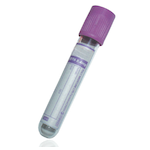Suitable Specimen Types
- Serum
- EDTA Plasma
- Fluoride Oxalate
- Li Hep Plasma
Specimen Transport
First class postSample Processing in Laboratory
Place sample in toxicology rack.Sample Preparation
None requiredTurnaround Time
3 days.Sample Stability
Keep refrigerated. 4 degrees.Morphine & Metabolites
General Information
Morphine is used as a short term analgesic, often as patient-controlled analgesia following surgical procedures, and for long term analgesia in conditions with protracted pain, for example in the later stages of malignant disease. In addition, morphine is an intermediary metabolite of a number of compounds. Heroin (diacetyl morphine) is converted rapidly to a short lived monoacetylmorphine intermediate (6-MAM) while a small amount of codeine (around 10%) is converted to morphine.
Morphine is metabolised primarily in the liver and approximately 87% of a dose of morphine is excreted in the urine within 72 hours of administration. Morphine is metabolized primarily into morphine-3-glucuronide (M3G) and morphine-6-glucuronide (M6G) via glucuronidation by phase II metabolism enzyme UDP-glucuronosyl transferase-2B7. About 60% of morphine is converted to M3G, and 6–10% is converted to M6G. Not only does the metabolism occur in the liver but it may also take place in the brain and the kidneys. M3G does not undergo opioid receptor binding and has no analgesic effect. M6G binds to μ-receptors and is half as potent an analgesic as morphine in humans. Morphine may also be metabolized into small amounts of normorphine and hydromorphone.
Measurement of morphine may be of use in both clinical and post mortem toxicological investigations. Until recently, morphine was not part of the repertoire of drugs for which therapeutic monitoring was advocated, but there is now evidence that, in cases of difficulty in obtaining analgesia, plasma morphine concentrations can be very useful. In post mortem investigations, the measurement of morphine and its metabolites (M3G and M6G) are important in elucidating whether any morphine detected is a cause of acute death (high morphine concentrations with low or absent metabolites) or prolonged therapeutic or illicit use of morphine or similar compounds (high morphine concentrations with high levels of metabolite).
Please note, this assay is for the quantitative determination of morphine and metabolites in blood. Opiate use (including morphine, codeine and heroin) may be detected via our urinary Drugs of Abuse Screen by LC-MS/MS.
Patient Preparation
No patient preperation required.
Notes
Morphine & metabolites measured by LC-MS/MS.
Reference Range
Morphine concentrations > 50 µg/L associated with toxicity. However, interpretation is dependent on the concentrations of metabolites. (Baselt, Disposition of Toxic Drugs and Chemicals in Man, Eighth Edition, 2008).
Please contact the laboratory for further interpretation.
Specifications
- EQA Scheme?: Yes
- EQA Status: LGC QUARTZ, LGC CLIN TOX
